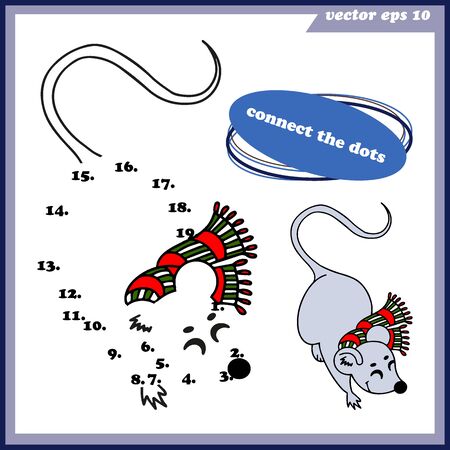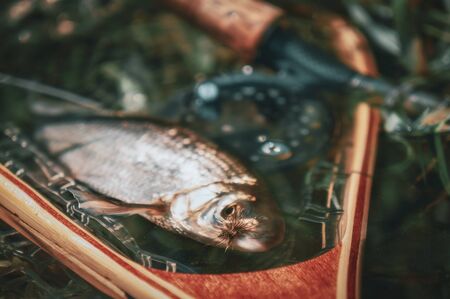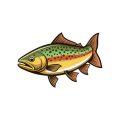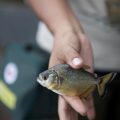Introduction to UK Fishing Regulations
If you’ve spent any time on the UK’s rivers, lakes, or along the coast with rod in hand, you’ll know there are plenty of rules and guidelines to follow. But have you ever wondered why these fishing regulations exist and who sets them? In this friendly overview, we’ll take a closer look at how these rules shape our angling adventures, protect fish stocks, and keep our waterways healthy for generations to come. Whether you’re a seasoned coarse fisher, a sea angler casting off Brighton Pier, or just enjoy the occasional trip with family, these regulations impact all of us. They’re not just about making things tricky—they’re about striking a balance between enjoying our favourite pastime and preserving the incredible natural habitats we love. Understanding how fishing rules are made helps us become better anglers and stewards of the UK’s unique aquatic environment.
2. The Role of Government Agencies
If you’ve ever wondered who’s really calling the shots on fishing rules here in the UK, it all comes down to a handful of key government agencies. These bodies are responsible for setting, enforcing, and sometimes updating fishing regulations to keep our waters healthy and fair for all. For us anglers, knowing which agency does what can save you a lot of hassle and help you stay on the right side of the law.
Which Agencies Are Involved?
Here’s a quick breakdown of the main players you’ll encounter:
| Agency | Area Covered | Main Responsibilities |
|---|---|---|
| Environment Agency (EA) | England | Freshwater fishing licences, enforcement, pollution control, habitat management |
| Natural Resources Wales (NRW) | Wales | Similar to EA but for Welsh rivers and lakes; manages local byelaws and conservation |
| Scottish Environment Protection Agency (SEPA) & Marine Scotland | Scotland | SEPA handles freshwater habitats; Marine Scotland oversees sea fisheries and policy enforcement |
| Department of Agriculture, Environment and Rural Affairs (DAERA) | Northern Ireland | Licensing, fishery management, protecting aquatic environments in NI |
| The Inshore Fisheries and Conservation Authorities (IFCAs) | England (inshore saltwater areas) | Local regulation of marine fisheries within six nautical miles from shore |
Their Key Responsibilities – What Does This Mean for Anglers?
These agencies aren’t just there for paperwork—they’re actively monitoring fish stocks, responding to pollution incidents, and running checks on rod licences. If you’re out fishing without the right permit or breaking a byelaw (like using illegal bait), it’s likely one of these agencies will pay you a visit.
Your Obligations Under Official Oversight
- Always carry a valid rod licence when required.
- Check local byelaws before heading out—these can change from region to region.
- Report any pollution or illegal fishing activity you spot—it helps everyone.
- If in doubt, contact your regional agency for advice before fishing new waters.
A Quick Tip from the Bank:
If you’re unsure which agency covers your favourite stretch of water, most have easy-to-use online maps or hotlines—don’t get caught out! Understanding how these agencies work behind the scenes means less worry on the bank and more time actually enjoying your session.

3. Input from Science and Research
When it comes to setting fishing regulations in the UK, science truly takes centre stage. The government doesn’t just pluck rules out of thin air—there’s a serious process involving marine biologists, environmental scientists, and research teams who study our waters year-round. Scientific studies provide crucial data on everything from fish stocks to breeding cycles and habitat health. For instance, experts carefully monitor the numbers of cod, bass, and other popular species, ensuring that their populations stay healthy for future generations. These findings help guide decisions on bag limits, minimum landing sizes, and even closed seasons to give fish time to spawn undisturbed.
Out in British waters, you might spot research boats collecting samples or tagging fish to track their movements—a real boots-on-the-ground approach! Universities like Plymouth and Bangor work alongside government agencies such as the Centre for Environment, Fisheries and Aquaculture Science (CEFAS) to run these projects. Their real-world research means that every regulation has a solid scientific backing, giving anglers confidence that the rules are there for good reason. So next time you check your local size limits or wonder why there’s a close season on certain rivers, remember: it’s science at work, keeping our favourite fishing spots thriving.
4. Consultation with Anglers and Stakeholders
When it comes to setting fishing regulations in the UK, it’s not just a case of scientists and government officials making decisions behind closed doors. The process is much more practical and inclusive, involving a wide range of voices from the angling community. Let’s have a look at how local fishers, angling clubs, and conservation groups get their say on proposed changes.
The Importance of Local Knowledge
Anglers and local clubs are out on the water day in, day out – they often notice changes in fish stocks or river health before anyone else. Their feedback provides invaluable real-world context that complements scientific data. Conservation groups, meanwhile, bring expertise on habitat protection and broader environmental impacts. All these perspectives help shape more balanced, effective regulations.
How Consultation Works in Practice
The consultation process typically follows a clear structure:
| Step | Description | Who’s Involved? |
|---|---|---|
| 1. Draft Proposal | Authorities draft initial regulation changes based on science and policy goals. | Government agencies, scientists |
| 2. Public Notification | Proposals are published on official websites and shared through angling networks. | Environment Agency, DEFRA, angling associations |
| 3. Feedback Period | A set period (often 6-12 weeks) where individuals and groups can submit comments. | Local anglers, clubs, conservation NGOs |
| 4. Review & Revision | Authorities consider feedback and may adjust proposals accordingly. | All stakeholders |
| 5. Final Decision & Implementation | The final regulations are announced and take effect after further publicity. | Government agencies, public |
Common Ways to Have Your Say
- Online surveys: Quick digital forms for public input.
- Public meetings: Hosted at local village halls or angling clubhouses—great for lively debate!
- Email submissions: For those who want to send detailed feedback or evidence.
- Liaison committees: Ongoing forums between regulators and major stakeholder groups.
The Value of Consultation: Real UK Examples
This collaborative approach has led to some well-known successes – such as adjustments to close seasons on certain rivers after strong lobbying by local anglers, or the introduction of voluntary catch-and-release schemes developed hand-in-hand with conservationists. It’s a system that values both science and experience from the bankside.
If you’ve ever wondered whether your opinion matters when new rules are on the horizon – rest assured, there’s a place for every voice in the UK’s fisheries management process!
5. Day-to-Day Impacts for UK Anglers
When you’re packing your gear and heading out for a session—whether it’s a misty dawn on a Cotswolds lake, or an after-work cast from the Brighton Marina—fishing regulations are shaping nearly every aspect of your trip. Let’s have a real look at how these rules play out on the ground (and in the water), directly affecting our tackle boxes and bragging rights.
What You Can Catch, Keep, or Must Release
Thanks to ever-evolving UK fishing regulations, the days of keeping every fish you land are long gone. Bag limits, minimum size rules, and protected species lists mean we often find ourselves measuring that perch or bass against a ruler before snapping a quick photo and letting it swim off. These aren’t just bureaucratic hurdles—they’re there to make sure stocks stay healthy for all of us. It also means knowing your bream from your barbel isn’t just handy for pub quizzes!
Tackle Choices Influenced by Rules
You might fancy using live bait or multiple rods, but local bylaws might say otherwise. For example, on many rivers, you’re limited to one rod during the coarse close season—and there are strict bans on certain bait types in some fisheries to protect native species. So those last-minute checks of the club or EA website aren’t just busywork; they can save your day (and wallet) from unwanted fines.
Timing Your Trips
Close seasons and time-of-day restrictions mean not every water is fair game all year round. In England and Wales, for instance, most rivers shut for coarse fishing from March to June—so planning ahead becomes essential. Many of us use this downtime for tackle maintenance, swapping stories with mates, or scouting new marks ready for opening day.
Why It Matters: Fairness and Sustainability
These day-to-day impacts might seem like red tape at first glance, but they’re what keep our sport fair and sustainable. Nobody likes seeing a favourite swim fished out or hearing tales of poaching down the canal. By sticking to the regs—sometimes even when it means returning that dream chub—we’re all doing our bit to pass on healthy waters to future generations.
6. Adapting Rules for the Future
Fishing in the UK is never static—much like the weather, it’s always changing. As our fish stocks ebb and flow and new environmental challenges crop up, regulations need to keep pace. The government doesn’t just set rules and forget about them; instead, there’s an ongoing process to review and adapt these regulations based on up-to-date science, environmental data, and what’s really happening out on the water. If cod numbers take a dip or a new invasive species shows up in your favourite river, you can bet that DEFRA, the Environment Agency, and local IFCA teams are already looking at what needs tweaking.
The voices of anglers and commercial fishers play a big part too. Through public consultations and regular chats with fishing clubs, associations, and coastal communities, policy makers get a real sense of what’s working and what isn’t. This feedback loop helps make sure that any changes aren’t just handed down from above—they’re shaped by those who live and breathe fishing every day.
Climate change, pollution, and shifting habitats all add extra layers to the challenge. That’s why adaptive management has become the name of the game in UK fisheries regulation. Instead of sticking rigidly to old rules, there’s room for pilot schemes—like trialling slot limits or seasonal closures—and for bringing in new tech such as electronic catch reporting.
So whether you’re casting for barbel on the Thames or heading out for mackerel off Cornwall, know that the rules you follow are designed to protect both your sport and the future health of our waters. It’s a balancing act between science, local knowledge, and community voices—a uniquely British way of keeping fishing fair and sustainable as times change.


